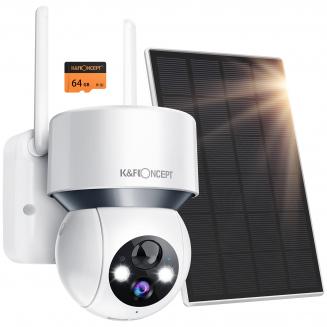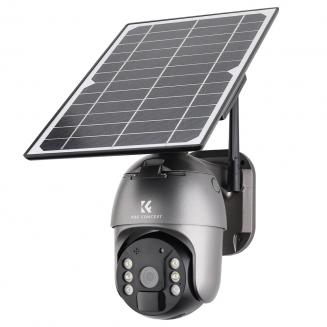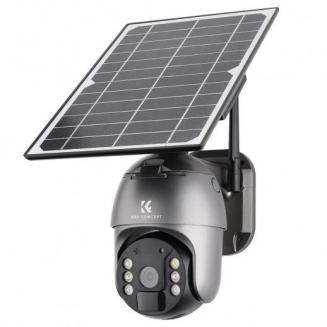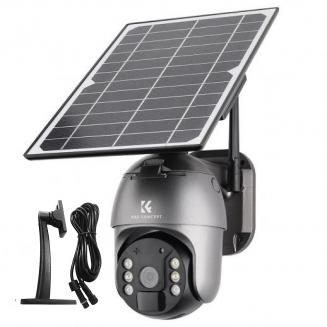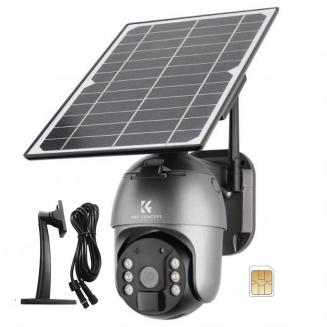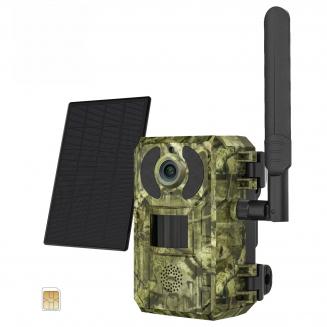Related Blog
Finder Scope Solar Filter
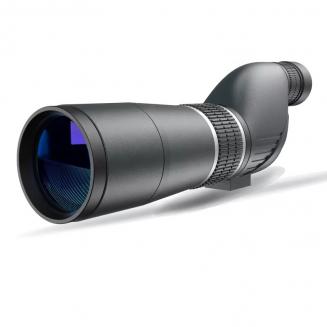
15-45x60 birding scope with tripod, storage bag, BAK4 HD waterproof viewing scope for birding wildlife scenery
$53.99
$82.99
Save $29.00 Instantly
Add to Cart
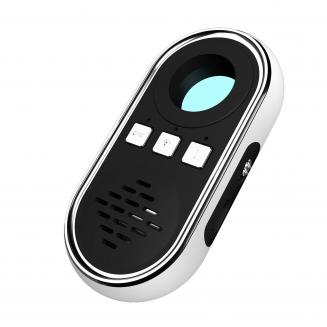
Hidden Camera Detector, Spy Camera Finder, Pocket Camera Finder with Mini LED Flashlight, Personal Emergency Security Sound Alarm Black
$20.99
Save Instantly
Add to Cart
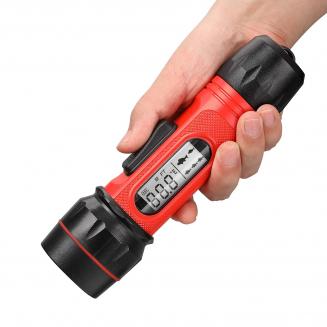
Handheld Sonar Depth Finder, Portable Ice Fishing Detector with Temperature, LCD Display Handheld Waterproof Fish Finder, 300ft
$163.99
$301.19
Save $137.20 Instantly
Add to Cart
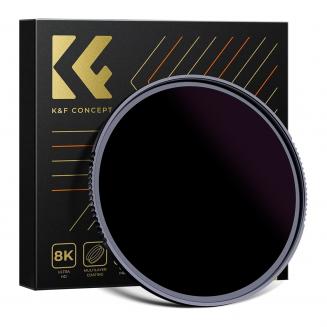
49mm Solar Filter ND100000,16.6-Stop Solid Neutral Density Filter for DSLR Camera Nano-Xcel Series
$26.99
Save Instantly
Add to Cart

72mm Solar Filter ND100000,16.6-Stop Solid Neutral Density Filter for DSLR Camera Nano-X Series
$42.99
Save Instantly
Add to Cart

67mm Solar Filter ND100000,16.6-Stop Solid Neutral Density Filter for DSLR Camera Nano-Xcel Series
$41.99
Save Instantly
Add to Cart

55mm Solar Filter ND100000,16.6-Stop Solid Neutral Density Filter for DSLR Camera Nano-Xcel Series
$29.99
Save Instantly
Add to Cart

58mm Solar Filter ND100000,16.6-Stop Solid Neutral Density Filter for DSLR Camera Nano-Xcel Series
$32.99
Save Instantly
Add to Cart
Related Reviews
Fantastic!
First of all I'm new to telescopes but not new to star gazing. It just arrived, today. Very well and securely packed. Plenty of bubble wrap all around. Foam inserts. Each eye piece in it's own protected box along with the finder piece. I previously ordered a Barska 900114 Reflector. Everything rattled in the box. Had to return it. Chose this Mak-Cass instead.Pros:This little scope packs a punch. With a 1250 focal length along with the included 20mm and 10mm lenses it's quite a powerful little unit for it's size.Getting it on sale is even better!The base is SOLID! It swivels but can be tightened. I don't know the proper terminology but it rotates up easily and can be tightened. You can rotate the 90 degree viewer to suit your position. The base is also nice to place any additional eye pieces you may have but there is no holder or "tray". Just a flat surface. Piece of mind they're not on the ground.Took a look at the hole for the tripod option. You can get MANY tripods out there. make sure you get one that can accommodate 15lbs, and is very sturdy, not flimsy. Not the cheapest one at Walmart for example. :)The red dot finder is nice. You can adjust it to match what you really see...just look at something big in the sky and adjust it with it's forward and rear knobs. The dot is an LED and not a laser and can be made dim or bright.Accessories galore. The lenses are the standard 1.25". I think you will need a 4" solar filter if you look for one. The eye piece can be changed out, too, if you so desire.All in all you won't see Jupiter's red dot fill up your lens but you should see Jupiter's cloud rings. I can't wait to look at the moon from outside the city.Customer Service? It's Orion. They're quite good in resolving any issues.Cons:I'd like to see equatorial mount somewhere for precise locations.I can't think of anything else I don't like, so far. Although it's considered a beginner's scope it is NOT a toy.Have fun!
05/12/2022
You are not done spending money with this.
I can tell you this telescope is great. assembly was easy and parts were prefabbed to excellent quality standards. the finder works okay but I would like a 90 degree viewer finder so I dont have to bend down and stick my head to the scope. Know that you are not done spending money! Look up eyepiece prices they are ASTRONOMICAL! I bought used and new ones on eBay for a reasonable prices $25-$50 each for cheapest ones you will at least want to buy a 15 mm and a 40 mm and a 2x Barlow eyepiece. 1.25'' sizes are cheapest . you can buy individual 2'' pieces from the Celestron eyepiece kit that is sold on amazon for $270 for $45 a piece separately if you can find them on eBay that's like the cheapest for 2" if you want to go that route . Filters are $15 a piece and up. So do your research on eyepieces. you may be better off buying a kit than separate pieces sometimes.No camera pictures from this look as clear as the objects seen with your eye in the eyepiece by the way. But it seems like a great beginner scope. One thing tho NO EYEPIECE HOLDER! it has holes for it but doesn't come with it. Why not!I have a 3d printer so can make one that is on thing averse ( look up Orion eyepiece holder).30 minute build time. comes with all tools. Use your own Allen wrenches because theirs strip.
29/08/2022
Love the telescope
It come with the finder scope my daughter and I finally got to use it we saw the moon very clear picture we were counting the creators on it and all the spots.Easy to put together and love it comes with 2 different lenses confess with a very nice storage bag which I was suprised but very convient.
25/06/2022
Upgrade finder scope
Finder scope is junk. Everything else so far is primo. Suggest Orion include a better finder scope with the XT8 classic.
31/05/2022
Excellent product
Adjusting and learning how to use the finder scope
23/03/2022
Excellent choice for use as a travel scope for wid
I was in the market for a good small scope that I could use at a moment’s notice with a minimum of fuss and bother and that I could also use as a travel scope without having to baby it. I already own two telescopes (in addition to several binoculars) – a JMI RB-66 on a large alt-az mount (consisting of two 6” reflecting telescopes yoked together and used like a giant binocular) and a Takahashi Sky90 refractor on an equatorial go-to mount. I love both scopes, but the JMI is heavy, cumbersome and a beast to move around. The Sky90 is a lot smaller and lighter, but, when combined with the equatorial mount, it’s still a little too big and heavy to run outside and use on a whim. It was also expensive enough that I’m not comfortable using it as a travel scope where it’s likely to undergo some rough handling. As a result, what I usually found myself doing was grabbing a set of binoculars and using those. There’s nothing wrong with that, except that the image is too shaky to be of much use or to get much enjoyment out of. Enter this scope – at least on paper, the specs were ideal for my needs: It has an aperture of 80mm, which is a good compromise size that should permit decent planetary viewing, lunar viewing, wide-field star viewing (essential for sights such as the Pleiades and certain star clusters) and at least the more prominent individual stars. It’s got a short focal length of 400mm, which makes it more portable and lighter than scopes with a longer focal length. It appeared from the specs to have a stable mount, which is essential for steady viewing. It contains all the accessories necessary to get you started – 3 lenses, a diagonal and a finding scope. And finally, it is being offered at a low enough price that I wouldn’t hesitate to use it as a travel scope. But be aware that this is a compromise size for a telescope. A focal length this short pretty much limits you to lower magnifications. Push the magnification too high and you’ll end up with various optical aberrations, unless you spend a lot of money to get a premium scope that is built to overcome those limitations. This is just a matter of the physics of the situation and it’s going to be a limitation for this sized scope, no matter who makes it. On the other hand, a scope of this size gives you a wider field of view than a scope with a longer focal length and there’s a lot to be said for wide-field telescope viewing. In addition, more aperture is almost always better than less aperture, since the larger the aperture, the more light that will be gathered. However, each small increase in aperture results in much higher prices and much larger sizes. As I said previously, for my purposes, 80mm was a good compromise. There are two other “compromises” in the specs for this particular scope of which the buyer should be aware: First, the diagonal provides an upright image, much like a spotting scope would; and second, the scope uses an alt-az mount, rather than an equatorial mount. But for me, neither of these were a disadvantage. First, if you’re going to be using an alt-az mount and you’re finding targets using star hopping rather than a go-to mount, then it seems to me that using a diagonal with an upright image is easier and more intuitive to use than a reversing-image diagonal. Second, I think that learning to find targets using star charts and star hopping is a good thing to do and I think that it is easier to do that using an alt-az mount rather than an equatorial mount. Now, on to how this particular scope performed in real life: Unpacking: When I received the shipping box, it looked like it had gone through some pretty rough handling on the way from the seller to me. However, when I opened everything up, it was clear that it had been well cushioned and there was no damage to anything that I could see. Assembly: The only instructions are contained on a laminated picture board that details the steps necessary for assembly. However, the only thing you really have to do is to fit the already assembled optical tube assembly, finder scope and diagonal to the mount. Other than that, everything is already assembled. The only caution I would give you involves the finder scope. In addition to two collimating screws, there’s also a metal spring button that helps to secure the finder scope within its own small tube (which is then attached to the main scope). This metal spring button comes in four small pieces – a small metal canister which is already screwed into the finder-holder tube, a small metal spring, a second canister which slides into the first, and a small screw which holds everything together. In my package, the spring, second canister and screw were all loose in the packaging, so make sure you don’t throw anything away until you’ve found them and assembled them properly. The instructions don’t tell you how to assemble them but when you look at the pictures and see what the purpose of the spring button is you’ll find that there’s only one way that it all works. The second thing to note about the finder scope is that there should be a rubber O-ring near the objective lens side of the finder scope. This O-ring fits in a groove on the finder scope and when the finder scope is inserted into its holder, it needs to be pushed in far enough that this O-ring actually fits inside the holder. This is an important step, because it ensures that the finder scope is securely held in its holder and doesn’t slide around. I saw a You Tube review that complained about a loose finder scope on this scope and it was clear that he had not followed this step, which was the cause of his problem Calibrating the finder scope: In daylight, take the assembled scope outside and insert your lowest powered eyepiece into the diagonal (that’s the 25mm eyepiece). Then aim the scope at a far-away object, center that object in the scope and focus the scope. Then, look through the finder scope. Before you do anything else, focus the finder scope until you get a sharp image of whatever it’s pointed at. You do that by twisting the front barrel of the finder scope. Once it’s focused, turn each set screw in the finder scope separately until the same object that is in the center of your main viewing lens appears in the X crosshairs of the finder scope. If you want to fine-tune it, replace the lens with a higher magnification lens and reset the finder scope. At this point, the finder scope should be good enough to use for the first time. When you use it for the first time at night, you can then calibrate it one more time and, at that point, you shouldn’t have to fiddle with it anymore. I didn’t expect anything special from this finder scope and thought that I would probably have to replace it. I was wrong. It is not flimsy, it appears to have good optics, it is stable and it does exactly what it should do – it enables you to easily find and center your scope on the intended target and then tighten down the telescope so that you can switch to your main eyepiece and be confident that your target will be in the center of your field of view. The quality of the finder scope was a pleasant surprise. The mount: From the pictures online and the specs, the mount certainly seemed sturdy, but the proof is in the pudding – is it sturdy and heavy enough to be stable, does it move smoothly and can it be locked down effectively so that it doesn’t drift? The answer is yes to all three questions. Bear in mind that the scope itself is very light. There is no need to use counterweights with this scope. In any event, the mount was rock solid. It didn’t tremble and it didn’t shake. The legs lock absolutely securely after they’re extended. The mount moves the scope smoothly in all directions and then locks down tight when you’ve centered your target. This is a quality mount. The eyepieces: There is both good news and bad news about the eyepieces (including the 3X Barlow lens). The lowest magnification eyepiece (the 25mm) and the middle magnification eyepiece (the 10mm) both performed fine. Good focus was easily achieved and the view appeared sharp enough for my purposes from edge to edge. The highest magnification eyepiece (the 5mm) was a piece of junk. Even in daylight, views were fuzzy. Using it to look at the moon, or Jupiter, or stars was a waste of time. It would simply not come into focus, no matter what I did. Maybe this was just bad luck with the particular eyepiece that I received, but I won’t be using it. However, another pleasant surprise for me with this scope was the 3X Barlow lens that came with the scope. It is a short lens and it’s entirely made of plastic so that it appears to be pretty flimsy. I’m not a big fan of Barlow lenses to begin with and I didn’t have high hopes for this one. However, when I found that the 5mm eyepiece was useless, I decided to go ahead and try the Barlow lens. Much to my surprise, it not only worked, it worked pretty darn well. Like all Barlow lenses, it darkens the image and it simply magnifies whatever image you’re already receiving with the underlying eyepiece – it doesn’t improve that image. But if you want higher magnification than the 40X provided by the 10mm eyepiece, you can either buy a new eyepiece or you can use the Barlow lens. This Barlow lens is good enough to give you both options. The optical tube assembly (the “OTA”): This is the heart of the scope. I ran it through four tests: First, when I was calibrating the finder scope, I also looked to see how the OTA performed. Second, I used the scope shortly after dusk. While there was some cloud cover and we were expecting rain later that evening, there was a clear view of Jupiter and also of a bright star, Arcturus. But because of high humidity, viewing conditions were not ideal. Third, I got up at 3:30 in the morning and went back out again. By this time, Jupiter was no longer visible, but the half-moon was clearly visible and there were also a large number of stars visible. Between my first viewing and the second one, we had had a good rain, which seemed to clear some of the humidity from the air, resulting in better viewing conditions. Finally, this morning, I used a collimating eyepiece to check the collimation of the OTA. Daylight views were fine, but they’re not much of a test for an astronomical telescope. Suffice it to say that the views were clear and well-focused (except when I used the 5mm eyepiece). My first views of the evening were also good. Using the medium eyepiece (10mm – 40X), I could clearly focus and see Jupiter and four of its moons. I was also able to clearly see two equatorial bands on Jupiter. Clarity was good but not exceptional, probably due to the high humidity. Arcturus resolved clearly. I did not see any color or other aberrations and the view using the two lower-powered eyepieces appeared to be sharp from edge to edge. Just for fun, I also used one of my own wide-field eyepieces, a 40mm eyepiece. It gave a spectacular wide-field view of the stars. That use of the scope is clearly one of its strengths. Finally, I did a rough collimation check by moving the scope slightly out of focus to see if the image remained round and without distortion. It did, suggesting to me that the tube was properly collimated (more on that later). My views later in the evening were even better. The details on the moon were sharp with no color or other aberrations in the view and the stars appropriately resolved to single points of light. I did the same rough collimation check as I did earlier and the results appeared to confirm my original impression that the scope was well collimated. The one point I should mention from both of my evening views is that the contrast is less in this scope than it is in my Takahashi. The Takahashi is a much more expensive scope and the lens coating and scope baffling is top-rate, so the comparison may not be a fair one. Moreover, the contrast in this Chinese-made scope (and most scopes today are probably made in China, even the most well-known brands sold in America) was perfectly fine and didn’t detract from my use or enjoyment of this scope. The buyer should just be aware that he or she shouldn’t expect the same deep contrast you get with more expensive scopes. Finally, after daylight, I used a collimating eyepiece from Orion to check out the collimation of the scope. I’m no expert, but it certainly appeared to me from that test that the scope is spot-on in its collimation. Bottom line conclusions: For my purposes, this is a great scope for the price. It is small and portable (I could easily move the entire scope and mount from place to place using only one hand). It performs very well indeed when used for wide-field views at lower magnifications, but still permits excellent lunar viewing and good planetary viewing. The acid test for me would be to see whether it clearly resolved double stars. I didn’t have the opportunity to try this last night. If and when I do try it with this scope, I’ll try to remember to come back and edit this review to add those results. But I expect that that might prove a challenge for this scope because of the higher magnifications normally required to clearly split doubles. In any event, if you require higher magnifications, you should probably be looking for a different type of scope altogether, but you’ll probably need a much larger and more expensive scope than this one. Also, because this scope doesn’t come with an equatorial mount or a motorized mount, don’t expect to use it for astrophotography. But for a small, portable scope with enough aperture to offer a large number of different viewing experiences, this scope was perfect for my needs. I highly recommend it. I received this scope at a discount for my honest opinion.
01/02/2022
A great first telescope.
This telescope is awesome. However, I wish it came with a better finder scope. The one provided is a cheap plastic red dot sight. I will be ordering a better finder scope. Other than that I highly recommend this scope. My first night out I could see jupiter and it's moons very well. I could make out the cloud bands and red spot as well. I cannot wait to see the moon and Saturn.
20/11/2021
Great scope but worthless table tripod
If you're an amateur astronomer and looking for a larger finder than a 50mm for your scope, look no further. This one is great quality and takes standard 1-1/4" diameter eyepieces! You'll need a bracket to attach this little 70mm scope to your main instrument though. The supplied tripod isn't worth the powder to blow it to kingdom come but the finder itself is worth every penny. Get the proper large enough bracket for the tube and you're good to go.
04/11/2021
Related Faq
Q
Which filter measure should I buy
62mm ? 50 mm ?
A
hi,we do not have filters for spotting scope.
Q
How much zoom does this camera have and is it only digital zoom?
A
this solar camera have 4X digital zoom.
Q
can i use this as a rifle shooting spot scope?
A
If 10x is all you need. They have a very sharp focus. On the upside there cheap and have a clear sharp focus that may serve as a a spotting scope if you use a 50cal. @ 100 yards. That’s monocular humor.
Q
Will it mount to a spotting scope ?
A
Not sure. It comes with a plate that has a standard camera-style tripod screwmount. If your scope has a thread for a screw it will probably work.
Q
Can I use it to take pictures of the Sun or Solar eclipse?
A
hello ,you can use ie take picture of the sun, but not for the solar eclipse
Related Video
K&F CONCEPT 2K Wireless Solar Security Cameras
K&F CONCEPT 20 60X60 HD Scope BAK4 Spotting Scope
Introducing K&F Concept 4G LTE Solar Trail Camera
Related Feature
Range Finder Laser Filter Lens
Rifle Scope With Lens Filter
Proper Use Of Lens Filter Scope
Lens Filter For Hawke 50mm Scope
Spotting Scope Lunar Lens Filter
Spotting Scope Sun Lens Filter
Canon Angle Finder C Adapter
Canon Angle Finder B With Adapter S
Aimpoint Killflash Filter Rifle Scope Lens
Canon Mount To Lp

